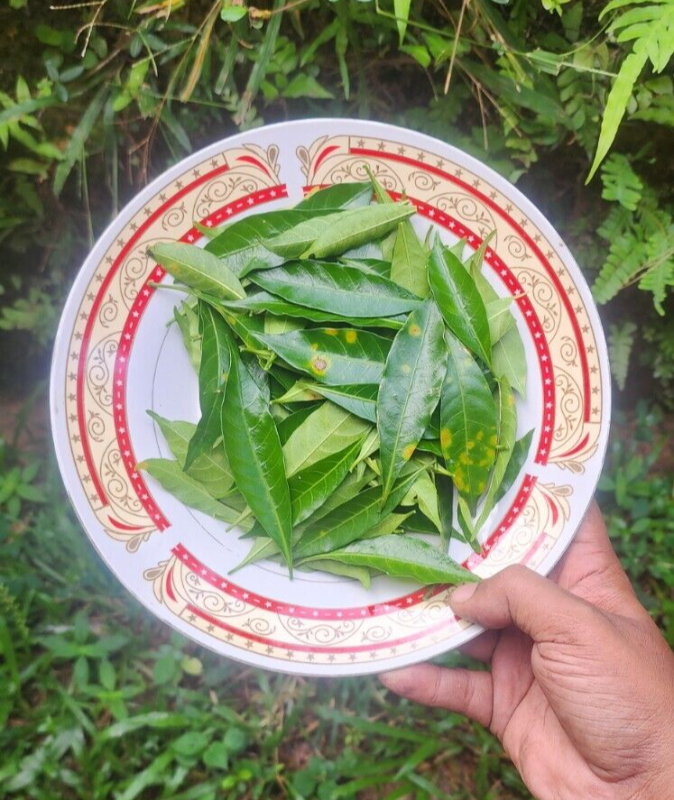Blog
5 Powerful Health Benefits of Crape Jasmine Leaves

Crape Jasmine Leaves
Ever noticed that beautiful plant with the star-shaped white flowers that seems to grow in almost every garden in Sri Lanka? We call it Wathusudda. You might also know it as the Pinwheel Flower or Crape Jasmine. It’s so common that we often walk right past it without a second thought.
But what if I told you that the glossy green leaves of this everyday plant are one of traditional Ayurveda’s most valuable secrets?
For generations, our ancestors have turned to Wathusudda leaves, or Wathusudda kola, as a powerful natural remedy. Let’s uncover the incredible health benefits hiding in plain sight in your own backyard.
More Than Just a Pretty Flower
Before we dive in, it’s amazing how many names this plant has! While our scientists call it Tabernaemontana \ divaricata, it’s also known around the world as Nero’s Crown and East India Rosebay. This global recognition hints at its powerful reputation in traditional medicine.
5 Proven Health Benefits of Crape Jasmine Leaves
Here’s how the humble Wathusudda leaf can be a game-changer for your health.

1. Your Natural Answer to Pain and Swelling
Feeling the ache of a swollen joint or a nasty sprain? Forget reaching for a pill straight away. For centuries, a simple paste made from crushed Wathusudda leaves has been the go-to remedy for inflammation. Its natural analgesic (pain-killing) and anti-inflammatory properties work wonders when applied to the sore area, offering gentle and effective relief.
2. A First-Aid Hero for Cuts and Wounds
Kids playing in the garden or a small scrape in the kitchen? Wathusudda is a fantastic natural antiseptic. The leaves have strong antimicrobial powers that help clean minor wounds and, more importantly, prevent nasty infections. Applying the crushed leaves or the plant’s milky sap helps the skin heal faster—a true first-aid hero!
3. The Secret to Clearer, Healthier Skin
Dealing with an annoying rash, boil, or skin irritation? The antibacterial and antifungal compounds in Crape Jasmine leaves make them perfect for tackling skin issues. A simple application can soothe irritation and fight off the microbes causing the problem, helping you achieve clearer, healthier skin, naturally.
4. An Ancient Remedy for Eye Care (With a Strong Warning!)
This is one of its most famous traditional uses, especially in village medicine. The milky sap of the Wathusudda plant has been used to soothe eye inflammation. However, this is extremely important: this is a potent remedy that should NEVER be tried at home without the guidance of a professional Ayurvedic doctor. The eyes are delicate, and incorrect application can cause serious harm.
5. A Glimpse into Modern Medicine’s Future
What’s really exciting is that modern science is now catching up to what our grandparents always knew. Researchers are actively studying Wathusudda for its potential to help manage blood sugar levels and even for its anti-cancer properties. While it’s still early days, these studies show that this common garden plant holds incredible promise for the future of medicine.
How to Use Wathusudda Leaves Safely

The Crape Jasmine plant is a gift from nature, but it deserves respect. While it’s a pillar of traditional medicine, it’s crucial to remember that what works for one person may not work for another.
Before trying any herbal remedy, please always speak to a healthcare professional or a trusted Ayurvedic doctor. They can give you the right advice for your specific health needs. Think of this plant not as a replacement for modern medicine, but as a wonderful, natural partner on your journey to wellness.
Pinwheel Flower
Nero’s Crown
East India Rosebay
Chandni (in India)
Nandiyavattai (in Tamil)

Crape Jasmine Leaves uses
Crape Jasmine Leaves benefits
Crape Jasmine Leaves tea
Discover more from Nath Mart
Subscribe to get the latest posts sent to your email.
